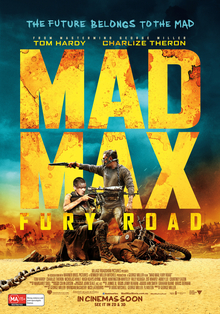 |
| Jude Law and Matt Damon in The Talented Mr. Ripley |
Marge Sherwood: Gwyneth Paltrow
Dickie Greenleaf: Jude Law
Meredith Logue: Cate Blanchett
Freddie Miles: Philip Seymour Hoffman
Peter Smith-Kingsley: Jack Davenport
Herbert Greenleaf: James Rebhorn
Inspector Roverini: Sergio Rubini
Alvin MacCarron: Philip Baker Hall
Aunt Joan: Celia Weston
Director: Anthony Minghella
Screenplay: Anthony Minghella
Based on a novel by Patricia Highsmith
Cinematography: John Seale
Production design: Roy Walker
Film editing: Walter Murch
Music: Gabriel Yared
This second film version of Patricia Highsmith's novel The Talented Mr. Ripley suffers from a miscast lead and an over-detailed screenplay. That it suffers by comparison to the earlier version, René Clément's Purple Noon (1960), is only incidental -- comparisons, as people have been saying since the 15th century or longer, are odious. More to the point is that Matt Damon was, at this point in his career, not up to the role of Highsmith's charming demon, Tom Ripley. Damon has since become a major star and a very good actor, but The Talented Mr. Ripley appeared only two years after his breakthrough role in Gus Van Sant's Good Will Hunting -- a part tailor-made for the young Damon, and not just because he co-wrote the Oscar-winning screenplay. Still in his twenties when he played Tom Ripley, Damon hadn't quite grown into his face: He seems all teeth and youthful mannerisms, not at all the kind of person to attract the friendship of a Dickie Greenleaf. His transformation from the poor but upwardly mobile Ripley to masquerading as the wealthy, cosmopolitan Greenleaf feels spurred by the urgency of the moment and not by any innate corruption of the soul, which should be the essence of Ripley. Damon's Ripley could never grow into the killer con-artist that carried Highsmith's books into four sequels. But again with the comparisons: Damon is following in the footsteps of Alain Delon, whose spectacularly handsome Ripley in Purple Noon is the embodiment of Shakespeare's dictum that "sweetest things turn sourest by their deeds." It also doesn't help that Damon's Ripley is matched with Jude Law's Dickie. More people than I have wished that Law had been cast as Ripley instead. Even Leonardo DiCaprio, originally sought for the role, might have made a more convincing Ripley than Damon. But the fault also lies in Anthony Minghella's screenplay, which stretches and pads the story into a 139-minute run time, giving us more of Ripley's backstory -- how he met Dickie's father and got the commission to bring Dickie home, and how he first pretended to be Dickie when he met Meredith Logue on the trip to Europe -- than is absolutely necessary. Again, Purple Noon began in medias res, with Ripley out sailing with Greenleaf and Marge, and the backstory only gradually emerges. Minghella has fallen into a common error of American filmmakers: the desire to explain too much to the audience. The Talented Mr. Ripley is a handsome film, and there are some fine performances: Seeing Philip Seymour Hoffman in movies always gives me a pang of loss, and his Freddie Miles is a superbly snotty, wicked creation. It's the one point in the movie when we actually root for Ripley to kill someone. Cate Blanchett's Meredith is a small role, but Blanchett makes us wish there were more of it. And I think I prefer the ending of Minghella's film to that of Purple Noon. Both leave Ripley on the brink of being found out, but Minghella gives us a better tease: His Ripley faces a dilemma he has resolved before, that of disposing of a body.

